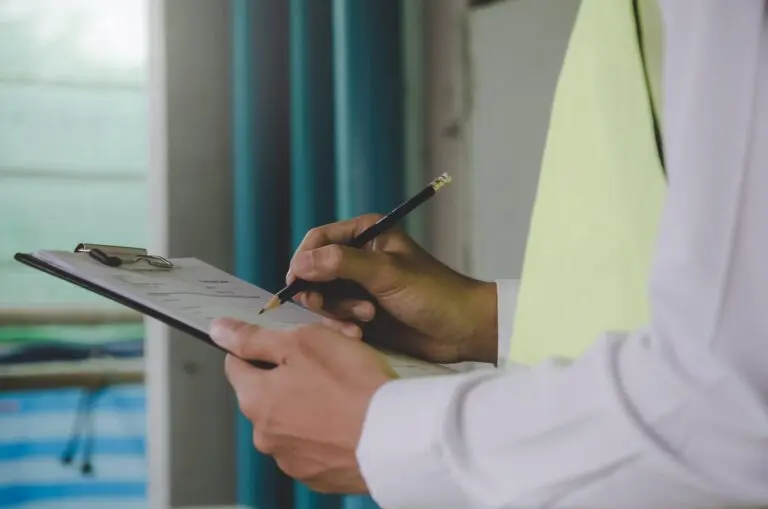Introduction
In today's fast-paced business environment, the importance of corporate reputation cannot be overstated. Organizations increasingly recognize that their brand image is intricately linked to how they handle health and safety issues. This is where Health and Safety Audits come into play. These audits do not merely serve as a compliance requirement; they represent a commitment to fostering a safe workplace, which significantly influences public perception and trust. In this article, we'll explore the multifaceted impact of health and safety audits on corporate reputation.
Understanding Health and Safety Audits
What Are Health and Safety Audits?
Health and safety audits are systematic examinations of an organization's health and safety management systems. These audits assess the effectiveness of policies, procedures, and practices associated with workplace safety. They aim to identify potential hazards, evaluate risk management strategies, and ensure compliance with legal requirements.
The Importance of Health and Safety Inspections
Health and safety inspections are integral components of an effective audit process. They involve the physical examination of facilities, equipment, and work practices to ensure adherence to established health standards. Regular inspections help organizations preemptively address risks before they escalate into serious incidents.
The Role of Fire Risk Assessments in Auditing
What Is a Fire Risk Assessment?
A fire risk assessment evaluates the potential fire hazards within a workplace setting. It identifies measures needed to mitigate these risks effectively. Conducting thorough fire risk assessments is crucial for ensuring employee safety while also protecting corporate assets.

Integrating Fire Risk Assessments into Health and Safety Audits
By incorporating fire risk assessments into health and safety audits, companies can adopt a more holistic approach to workplace safety. This integration helps identify vulnerabilities that could lead to catastrophic events while simultaneously enhancing the overall credibility of the organization’s health policies.
The Consequences of Poor Health and Safety Practices
Reputational Damage from Workplace Incidents
Incidents resulting from inadequate health and safety measures can severely damage corporate reputation. When accidents occur, they often attract media attention, leading to negative public perception that can linger long after the event.
Legal Ramifications Affecting Reputation
Failure to comply with health regulations can result in legal consequences for organizations, including fines or litigation. Such repercussions not only affect financial standing but also tarnish reputations in eyes of stakeholders.
Positive Impacts of Effective Health and Safety Audits on Corporate Reputation
Building Trust with Stakeholders
Companies committed to rigorous health and safety audits demonstrate responsibility towards employee welfare. This commitment fosters trust among employees, clients, investors, and suppliers alike.
Enhancing Brand Image through Compliance
Compliance with health regulations showcases an organization’s dedication to meeting industry standards. A strong brand image built on ethical practices can lead to increased customer loyalty.
Case Studies: Companies That Excelled Through Health & Safety Commitments
Company A: Transforming Reputation Through Proactive Measures
Company A invested heavily in comprehensive health audits after a significant incident disrupted operations. By addressing identified issues head-on, they managed not only to recover but also enhance their reputation.
Company B: The Cost-Benefit Analysis of Well-Conducted Audits
Company B conducted regular health inspections leading them to discover numerous inefficiencies that were costing them money over time. Their dedication paid off when they saw improved employee morale alongside a boost in public perception following successful audit results.
Best Practices for Conducting Effective Health & Safety Audits
Establish Clear Objectives for Audits
Setting specific objectives allows organizations to tailor their auditing procedures effectively while ensuring all necessary areas are covered during evaluations.
Regular Training for Audit Teams
Investing in training ensures audit teams remain updated on best practices related to both auditing techniques as well as industry-specific regulations impacting workplace safety standards.
Challenges Faced During Health & Safety Audits
Resistance from Employees or Management Teams
Sometimes employees may resist changes suggested by audit findings due either fear or misunderstanding about what those changes entail.
Limited Resources Affecting Audit Quality
Organizations may face budgetary constraints that limit their ability implement effective auditing processes or incorporate necessary follow-up actions after identifying issues during inspections.
Leveraging Technology in Health & Safety Auditing Processes
Utilizing Software Tools for Streamlined Auditing
Modern technology offers various software solutions designed specifically streamline data collection during the audit process thereby increasing efficiency while reducing human error likelihoods inherent traditional low risk office audits for compliance methods used before digitization became commonplace across many industries today.
Data Analytics Enhancing Decision Making Through Insights
Employing data analytics allows organizations glean insights from past incidents enabling them make informed decisions regarding resource allocations towards mitigating identified risks moving forward thus strengthening overall corporate reputation long term outcomes positively influenced by proactive approaches adapting quickly changing environments surrounding workplaces everywhere globally now!
FAQs
li1/ol1/li2li2/ol2li3# How often should companies conduct these audits?- Ideally, companies should conduct them at least annually or whenever there are significant changes in operations or regulations.
- While both have merits; external auditors provide an objective perspective that's often beneficial.
- Many online platforms offer training materials along with software solutions designed specifically streamline auditing tasks efficiently!
Conclusion
In summary, the impact of health and safety audits on corporate reputation cannot be understated. As businesses navigate an increasingly complex regulatory landscape coupled with rising public expectations regarding ethical practices concerning employee welfare, understanding how these factors intersect becomes vital for sustainable success! Organizations must commit themselves engage regularly rigorous assessments not just fulfill compliance obligations but ultimately build foundations trustworthiness reflecting positively upon brands throughout communities served globally over time!